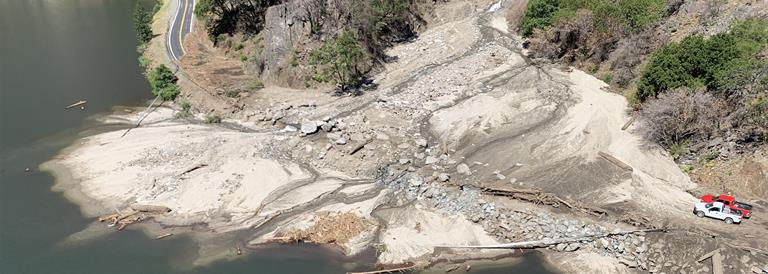 A runoff-induced debris flow in the 2021 Dixie Fire burn area covered a portion of Highway 70 and sent sediment and debris into the North Fork of the Feather River. Click the image to view the entire scene.
Photo credit: Don Lindsay, CGS.
A runoff-induced debris flow in the 2021 Dixie Fire burn area covered a portion of Highway 70 and sent sediment and debris into the North Fork of the Feather River. Click the image to view the entire scene.
Photo credit: Don Lindsay, CGS.
Wildfire reduces vegetation and can alter soil properties, dramatically increasing rainfall runoff on steep terrain.
Soil, ash, burned vegetation, boulders, and other debris can be scoured from hillslopes and channels, then potentially mobilize as damaging debris flows that threaten life, property, and infrastructure. Numerous damaging post-fire floods and debris flows have occurred across California in recent years. These hazards are likely to continue and increase in both frequency and magnitude in the future. The California Geological Survey has created the Burned Watershed Geohazards Program to better address post-fire hazards such as flash flooding and debris flows.
